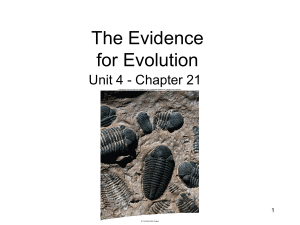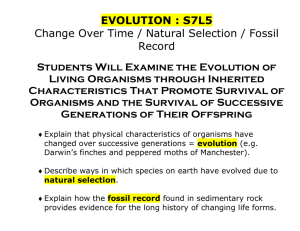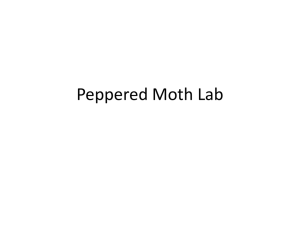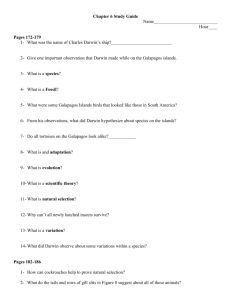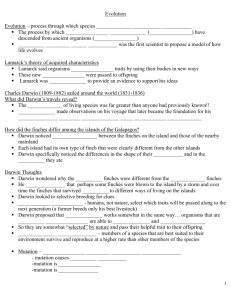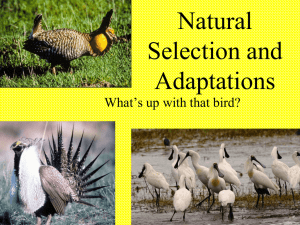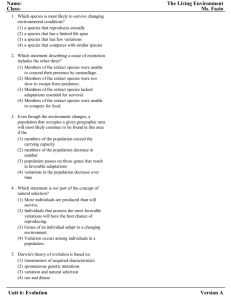The evidence for evolution
advertisement
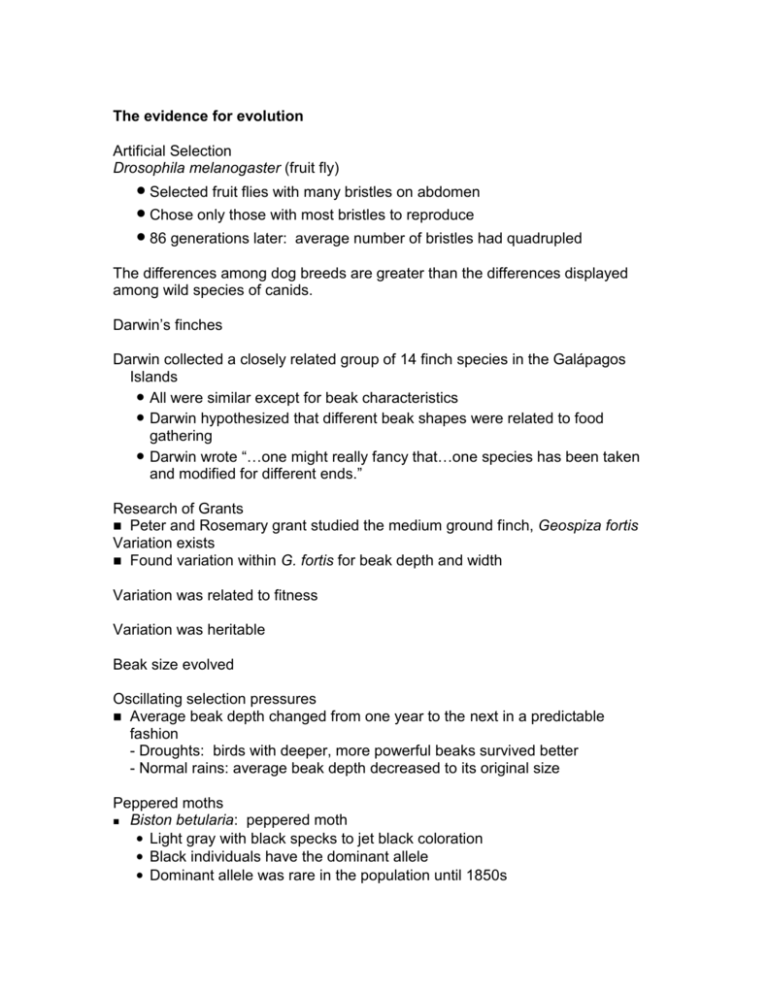
The evidence for evolution Artificial Selection Drosophila melanogaster (fruit fly) • Selected fruit flies with many bristles on abdomen • Chose only those with most bristles to reproduce • 86 generations later: average number of bristles had quadrupled The differences among dog breeds are greater than the differences displayed among wild species of canids. Darwin’s finches Darwin collected a closely related group of 14 finch species in the Galápagos Islands • All were similar except for beak characteristics • Darwin hypothesized that different beak shapes were related to food gathering • Darwin wrote “…one might really fancy that…one species has been taken and modified for different ends.” Research of Grants Peter and Rosemary grant studied the medium ground finch, Geospiza fortis Variation exists Found variation within G. fortis for beak depth and width Variation was related to fitness Variation was heritable Beak size evolved Oscillating selection pressures Average beak depth changed from one year to the next in a predictable fashion - Droughts: birds with deeper, more powerful beaks survived better - Normal rains: average beak depth decreased to its original size Peppered moths Biston betularia: peppered moth • Light gray with black specks to jet black coloration • Black individuals have the dominant allele • Dominant allele was rare in the population until 1850s Early studies J.W. Tutt hypothesized that light-colored moths declined because of predation Light moths were easily seen by birds on darkened (sooty) trees Experimental studies Bernard Kettlewell tested the hypothesis • Dark tree trunks = more dark-colored moths survived • Light tree trunks = more light-colored moths survived When environmental conditions reverse, so does selection pressure Evolution of color Industrial melanism: phenomenon in which darker individuals come to predominate over lighter ones Pollution control resulted in lichen growing on trees and bark color being lighter again Light-colored peppered moths now are dominant in the population in both Britain and Michigan The agent of selection may be difficult to pin down Could poisoning by pollution be the agent of natural selection? Soapberry bugs on introduced hosts Soapberry bug evolution Florida: native host has thick-walled fruit - bugs have long proboscis South-central US: native host has thin-walled fruit - bugs have short proboscis Introduction of new hosts to each population: thin-walled in Florida, thickwalled in Texas Using historical collections and current populations, a change in proboscis length of bugs on the introduced host has occurred in the predicted direction within 50 years No change in other size characters was found Soapberry evolution study conclusion Evolutionary change occurred due to natural selection Substantial morphological evolution occurred over the period of only a few decades Knowledge of the natural history of the organism allowed the direction of evolutionary change to be accurately predicted before it was measured Fossil evidence Fossils are the preserved remains of once-living organisms Rock fossils are created when: • • • organism buried in sediment calcium in bone or other hard tissue mineralizes surrounding sediment hardens to form rock Carbon dating Absolute dating: age of fossils is estimated by rates of radioactive decay Relative dating: position of the fossil in the sediment Isotopes, like U238, transform at precisely known rates into nonradioactive forms. The rate of decay is known as an isotope’s half-life Fossil records document the course of life through time Transitive organisms Fossils document evolutionary transition The oldest known bird fossil is the Archaeopteryx It is intermediate between bird and dinosaur Possesses some ancestral traits and some traits of present day birds Archaeopteryx was first found in 1859 Hot off the presses New ungulate fossil described in December 2007 as missing link between whales and land-dwelling mammals Similar skull and ears • Idohyus (48 mya)
